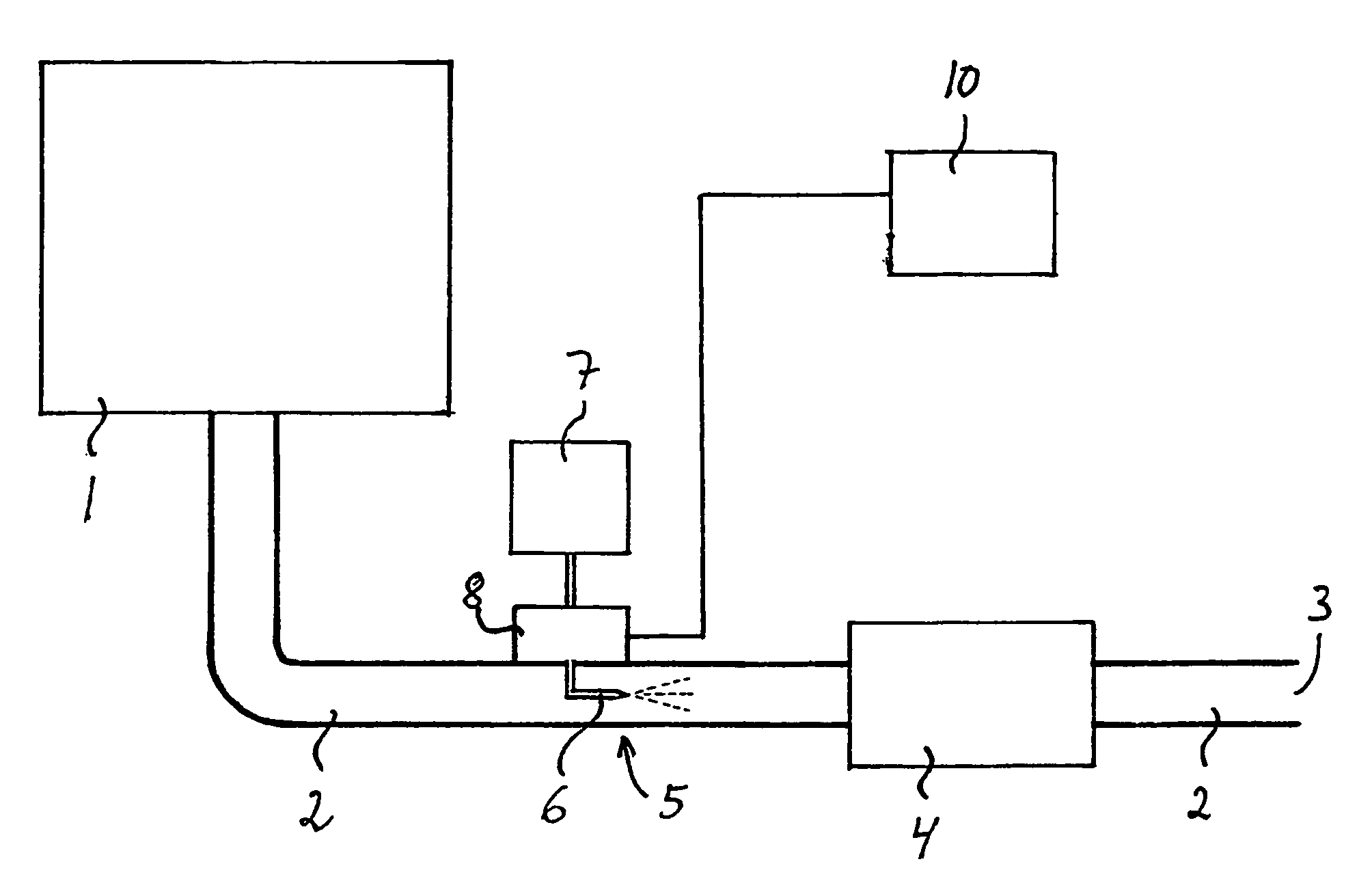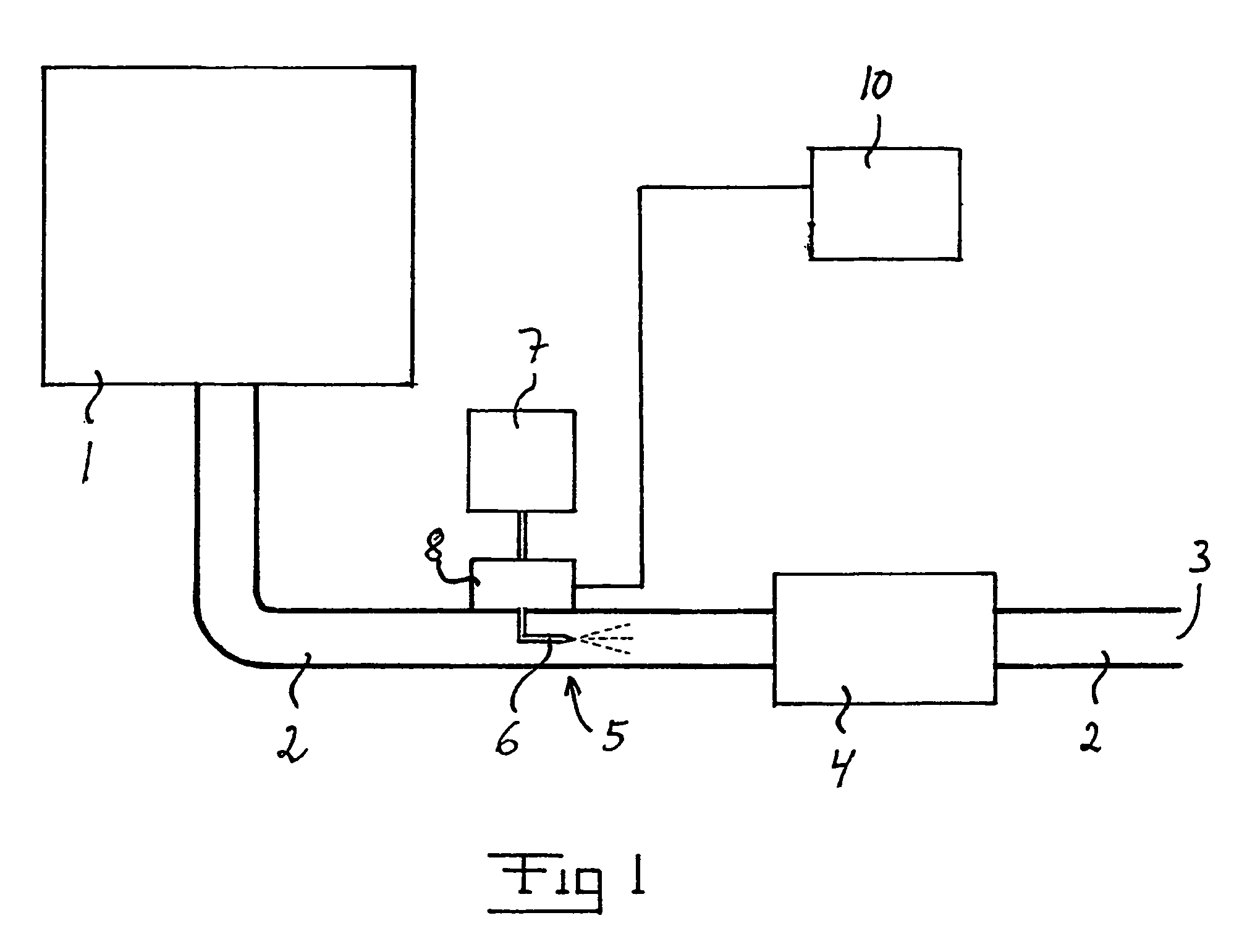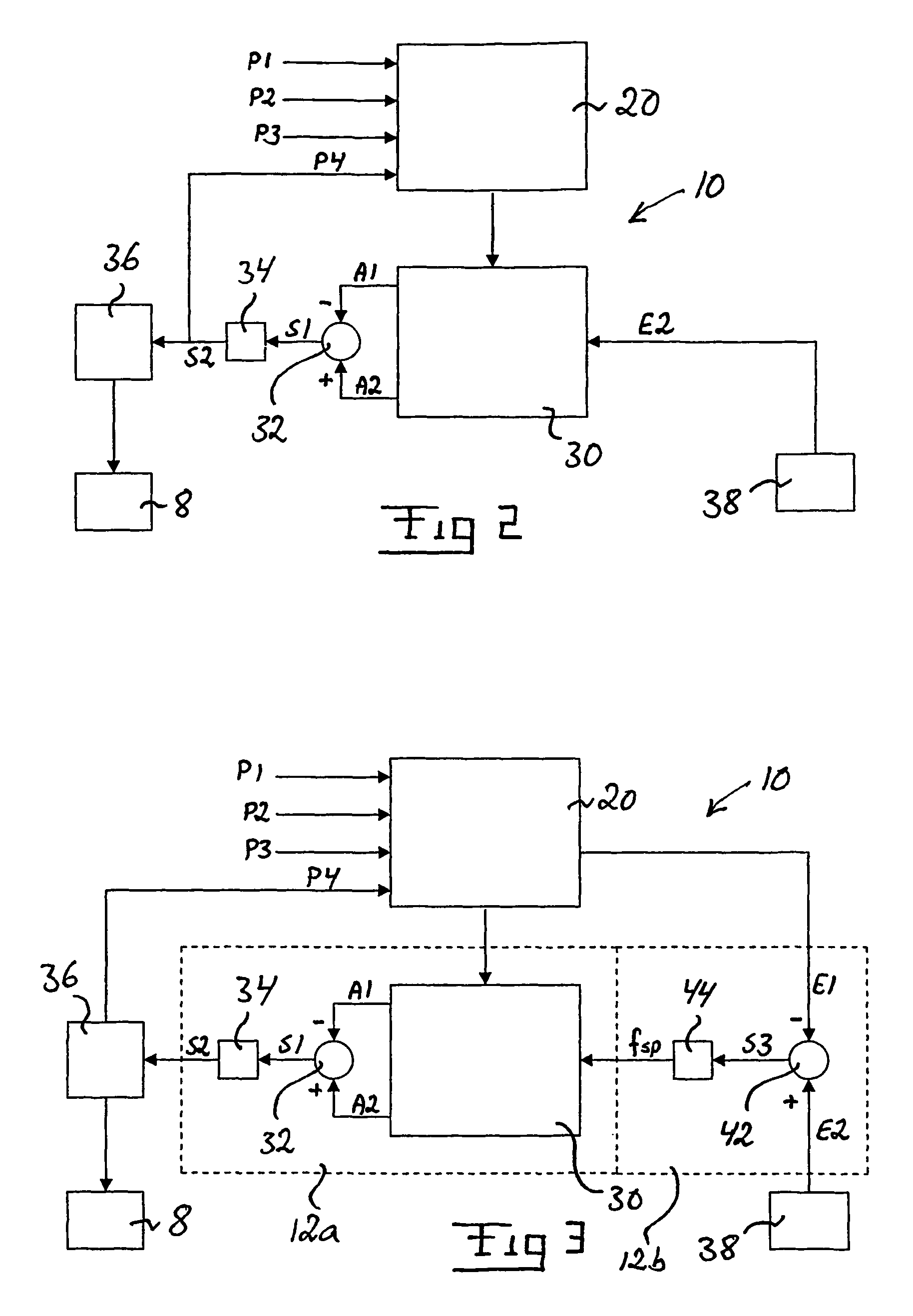Method and device for controlling the injection of reducing agent
a technology of reducing agent and injection method, which is applied in the direction of braking system, process and machine control, instruments, etc., can solve the problem of incorrect proportioning of reducing agent, and achieve the effect of easy and reliable control
- Summary
- Abstract
- Description
- Claims
- Application Information
AI Technical Summary
Benefits of technology
Problems solved by technology
Method used
Image
Examples
first embodiment
[0036]FIG. 2 illustrates a device 10 according to the invention. The device 10 comprises a first calculation means 20 adapted to determining continuously, by use of a computation model, the current state of the catalyst, taking into account the expected reactions in the catalyst under prevailing operating conditions. The computation model takes into account the expected exothermal and endothermal reactions in the catalyst 4 under prevailing operating conditions and calculates inter alia the accumulation of the reducing substance concerned in different parts of the catalyst, and the conversion of the exhaust gas substance concerned which takes place in different parts of the catalyst. The computation model may be of any desired design provided that it produces with the desired accuracy a correct value for the accumulation of the reducing substance and the conversion of the exhaust gas substance in the catalyst. An example of a computation model suitable in the context is described be...
second embodiment
[0040]FIG. 3 illustrates a device 10 according to the invention. The components which appear both in the embodiment described above with reference to FIG. 2 and in the embodiment according to FIG. 3 are denoted by the same reference notations. In the embodiment according to FIG. 3, the device 10 likewise comprises means for determining by calculation or measurement an emission actual value E1 representative of the current exhaust gas substance content of the exhaust gases leaving the catalyst 4. In cases where the emission actual value E1 is determined by calculation, this is preferably done in the first computation means 20 by using the abovementioned computation model or in a separate computation means on the basis of information from that computation model. In cases where the emission actual value E1 is determined by measurement, this is done by a measuring means arranged in the exhaust line downstream from the catalyst 4.
[0041]In the embodiment according to FIG. 3, the second co...
PUM
 Login to View More
Login to View More Abstract
Description
Claims
Application Information
 Login to View More
Login to View More - R&D
- Intellectual Property
- Life Sciences
- Materials
- Tech Scout
- Unparalleled Data Quality
- Higher Quality Content
- 60% Fewer Hallucinations
Browse by: Latest US Patents, China's latest patents, Technical Efficacy Thesaurus, Application Domain, Technology Topic, Popular Technical Reports.
© 2025 PatSnap. All rights reserved.Legal|Privacy policy|Modern Slavery Act Transparency Statement|Sitemap|About US| Contact US: help@patsnap.com



